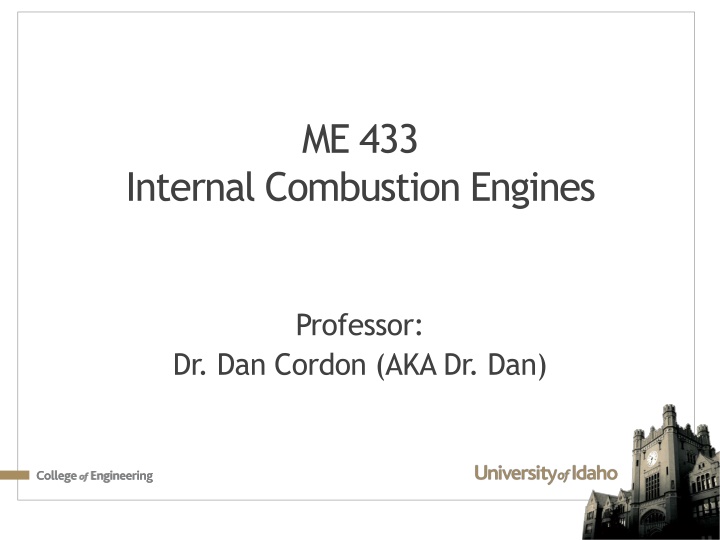
Turbocharger Selection and Analysis: Tips for Efficient Performance
Understand the intricacies of selecting and analyzing turbochargers, from centrifugal compressors to turbine selection, compressor maps, and sizing considerations. Learn how to optimize your engine's performance with the right turbocharger components.
Download Presentation

Please find below an Image/Link to download the presentation.
The content on the website is provided AS IS for your information and personal use only. It may not be sold, licensed, or shared on other websites without obtaining consent from the author. If you encounter any issues during the download, it is possible that the publisher has removed the file from their server.
You are allowed to download the files provided on this website for personal or commercial use, subject to the condition that they are used lawfully. All files are the property of their respective owners.
The content on the website is provided AS IS for your information and personal use only. It may not be sold, licensed, or shared on other websites without obtaining consent from the author.
E N D
Presentation Transcript
ME 433 Internal Combustion Engines Professor: Dr. Dan Cordon (AKA Dr. Dan)
Centrifugal Compressors (Turbochargers) Analysis of a centrifugal compressor is different from a positive displacement supercharger. Power comes from exhaust flow (blowdown is significant portion of energy, plus some exhaust stroke displacement). Generally consider the energy to drive the compressor as free , so we don t account for it. A wastegate controls the amount of exhaust bypass to maintain a desired boost pressure (usually measured at intake pressure, after any intercooler and piping). Mass airflow is not directly linked to the engine speed at all.
Centrifugal Compressors (Turbochargers) Turbine Selection Choosing a turbine size is your first decision. Turbine housing family (T15, T25, T3, T4, T6, etc.) Turbine a/r (area to radius ratio) Turbine wheels
Compressor Maps The biggest difference in turbocharger selection usually comes from selecting the most appropriate compressor size and geometry. Compressor map shows the mass flow rate (sometimes volume flow rate at STP), compressor RPM, Pressure ratio, and isentropic efficiency. Need to plot the data points for your engine across whole RPM range on the compressor map. Pay special attention to the surge line. Surge Video Pay attention to the choked line.
Sizing a Turbocharger Compressor For a hand-calculation version of compressor selection you will need to calculate the following for your engine and desired boost pressure: Pressure ratio ?? =????? ????????+?????? ???? ???????? ?????? ???? ???????? As a function of RPM (pick several points) Naturally-aspirated volume flow rate ?????????? ? ???? ???= ?? Forced-Induction volume flow rate ???= ??? ?? If you need mass flow rate multiply by density ????= ~0.76??? Select a compressor size where the peak RPM flow of your engine is below the choked flow for the compressor. Plot your data points on the compressor map Check what engine RPM would cause surge at full boost Look at other compressor sizes and plot the same thing. ??3?? 1.23?? ?3
Turbine Maps Not as much information as the compressor map (rarely have full efficiency curves) Use the airflow data from your engine (increased slightly since fuel flow will be added) to get the exhaust flow for each point Your turbine operating points need to fall on a single turbine wheel/housing curve. The pressure ratio describes the pressure drop across the turbine. High pressure ratio means more backpressure seen during the exhaust stroke (more pumping work required)
Detailed Turbine Maps If working as OEM you will probably have access to detailed turbine maps. Red lines are turbine efficiency curves at various turbine speeds (80k RPM 160k RPM on the curve) Green lines are turbine mass flow vs pressure ratio at each turbine speed Non-detailed turbine maps show an average flow vs pressure ratio, then tell you a peak or average efficiency. (magenta) Turbine efficiency for most turbochargers will be lower at low speed (60%) and higher at high speed (70%). You likely prefer a turbine combination that functions at a lower PR. Show Borg Warner Simulation for sizing.
Activity (Example) Borg Warner https://www.borgwarner.com/matchbot/#version=1.4 6.0L V8 engine with one giant single turbo 15 psi of boost at engine intake 2500, 3000, 4000, 5000, 6000, 7000 RPM 10 psi at 2500 RPM and 15 psi from 3000 RPM and up Compressor: AirWerks S500SX-E (120mm x 78mm) (1500909702) Adjust turbine expansion to line up with 110mm 1.15 a/r turbine housing Look at several calculated values: Turbo Shaft Power Engine Power and Torque Fuel Flow Requirement Exhaust Manifold Pressure Engine Delta_p (intake pressure exhaust pressure) Wastegate Flow Wastegate Diameter Compressor: AirWerks S400SX-E (110mm x 73mm) (1400909710) Adjust turbine expansion to line up with 87mm 1.10 a/r turbine housing
S500SX-E (120mm x 78mm) (1500909702) 110mm 1.15 a/r turbine housing
S500SX-E (120mm x 78mm) (1500909702) 110mm 0.85 a/r turbine housing
400SX-E (110mm x 73mm) (1400909710) 87mm 1.10 a/r turbine housing
Activity (go to a computer lab) Be ready to share your results in class on Monday (screen captures of your analysis, or demo on the lecture screen) Pick an engine your group is interested in, and quantity of turbochargers Provide 6 inputs for the Borg Warner MatchBot Show data points on the compressor map you selected (or Garret, or other compressor/turbine maps) Change values for each 6 point for turbine expansion ratio in order to get all points on the same curve Confirm that the compressor and turbine combination you want does exist Online Turbocharger Software (free-ish) Borg Warner https://www.borgwarner.com/matchbot/#version=1.4 Comprehensive calculator with ability for turbine sizing calculations Garrett Motion (requires registration/login) https://www.garrettmotion.com/racing-and-performance/boost-adviser/ Somewhat basic (2 points), but gives access to all compressor and turbine maps





















